Hoi An Silk Village – A vivid museum featuring various silkworm breeds, silk textiles, and weaving tools… Here, visitors can learn about the long-standing history of this traditional craft. Additionally, they can admire collections of silk products and observe the manual weaving techniques of the Champa – Dai Viet people. Let’s explore the rustic and tranquil yet poetic atmosphere of this silk village with DanangPrivateCar.com’s!
Coordinates of Hoi An Silk Village:
Location:
The silk village is located at 28 Nguyen Tat Thanh street, Tan An ward, Hoi An city, Quang Nam province. It is a place that displays and preserves the traditional silk weaving craft, various breeds of silkworms, and precious genetic resources of silk cocoons – the ancient strains brought from deep forests, unadulterated.
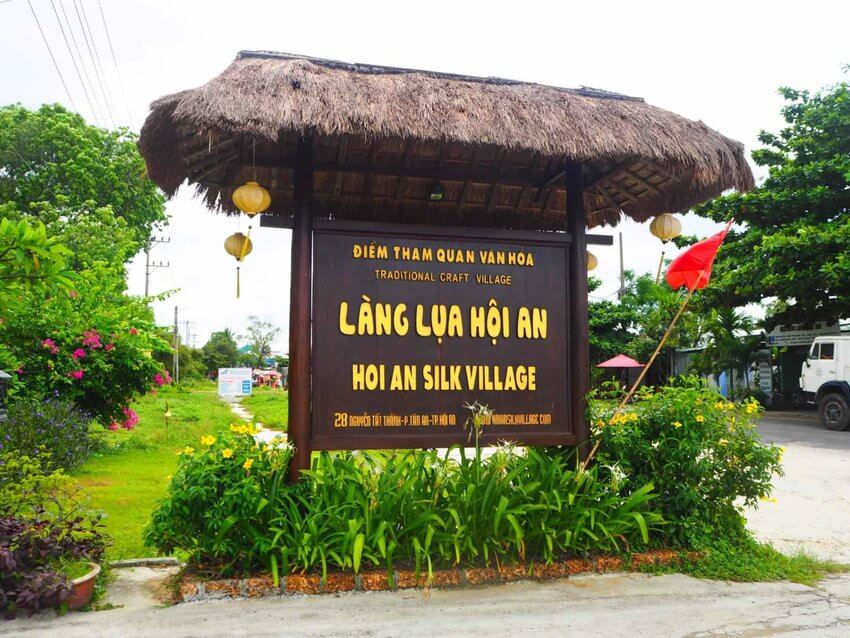
In the face of the risk of extinction of traditional crafts villages, particularly silk farming, silkworm rearing, and silk weaving, the Silk Village has become a well-known address for preserving the essence of silk weaving.
The village was restored and developed by the Quang Nam Silk Joint Stock Company. It is not only a place for growing mulberry, rearing silkworms, and weaving silk but also a fascinating tourist destination for domestic and international visitors.
Directions to the Silk Village:
The silk village is only about 1km away from the center of Hoi An Ancient Town, and the route is quite easy to find. Visitors can choose various means of transportation according to their personal preferences to get here.
- Personal vehicles: Private cars, motorbikes, or bicycles are the means of transportation that tourists often choose to move around.
- Public transportation: In Hoi An, visitors can take a cyclo to visit the silk village while enjoying the beautiful scenery on both sides of the road. Besides, private car services, taxi, motorbike, and bicycle rentals are also popular in the old town.
Book a car with our driver now and you will have the most comfortable trip at the best price: Hoi An Private Car – Hoi An Car Rental With Driver
The ideal time to visit Hoi An silk village
The best time to visit the silk village is from March to September every year, when the weather in Hoi An is sunny, with little rain, suitable for outdoor sightseeing and entertainment.
From September to January every year, Hoi An enters the rainy season, the space becomes quieter and more serene. You can still visit Hoi An silk village during this time if you cannot schedule your trip during the dry season, as there are still many indoor activities taking place in the village.
Learn about the 300-year-old history of Hoi An silk village
The silk weaving industry in the land of Dang Trong flourished most during the period from the 16th to 17th centuries. This was also the premise for the expansion of the weaving village in Hoi An at that time with the process of growing mulberry, raising silkworms, extracting silk cocoons, and weaving silk manually but no less professionally.
Businessmen from both Eastern and Western countries flocked to the Hoi An port to buy various types of silk and raw silk here. This contributed to transforming the Hoi An port into an important “link” in the “silk road on the sea” at that time.
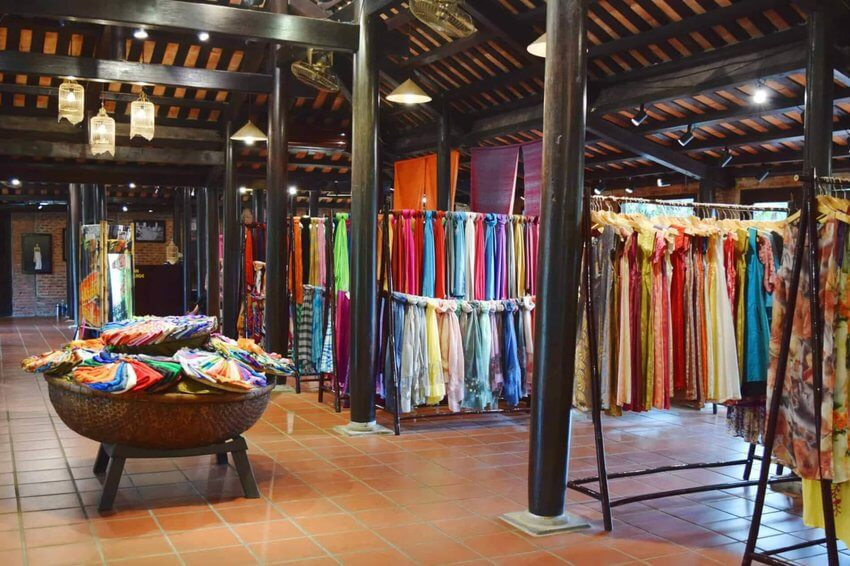
To this day, at Hoi An silk village, ancient looms are not only preserved intact but also can still function well. High-quality silk is still being woven here thanks to excellent silk threads.
From there, the silk village was invested in, restored with the goal of reviving, maintaining, and developing the silk weaving industry of Quang Nam province. At the same time, it has become a destination for tourists to experience the most authentic space of the silk weaving village. From the process of raising silkworms to weaving finished products.
Now open, ticket prices for Hoi An silk village
Along with the development of the silk village, Hoi An silk has had the opportunity to be promoted to international tourists, Asian Silk Association, World Silk Association… In the future, the silk village aims to become a center for distributing Vietnam’s leading silk products.
When visiting the silk village, tourists can learn about the origin of the “silk road on the sea” in the 17th century, as well as the traditional values of the locality. At the same time, there is also an opportunity to learn about the process of creating shiny, colorful silk pieces.
- Opening hours: The Silk Village opens its doors to visitors from 8:00 AM to 9:00 PM every day of the week.
- Admission fee: The entrance fee is 50,000 VND per person.
- Short tour fee: The fee for a short tour is 100,000 VND per person and the duration of the tour is 45 minutes.
- Long tour fee: The fee for a long tour is 595,000 VND per person and the duration of the tour is 4 hours. The tour includes a guided commentary.
See More: The Best Bars and Nightlife in Hoi An – A Local’s Guide
Fun activities for tourists visiting Hoi An silk village
DanangPrivateCar.com believes that visitors will have a memorable trip when they have the opportunity to pick mulberries, feed silkworms, enjoy the singing of village women, and taste many traditional dishes of Quang people when coming to the silk village. Let’s check out the experiences that await tourists to explore when they come to this village!
Visit traditional houses
The first experience for you when you come to the silk village is to stroll and visit traditional houses. There are hundreds of colorful and vibrant ao dai costumes on display here.
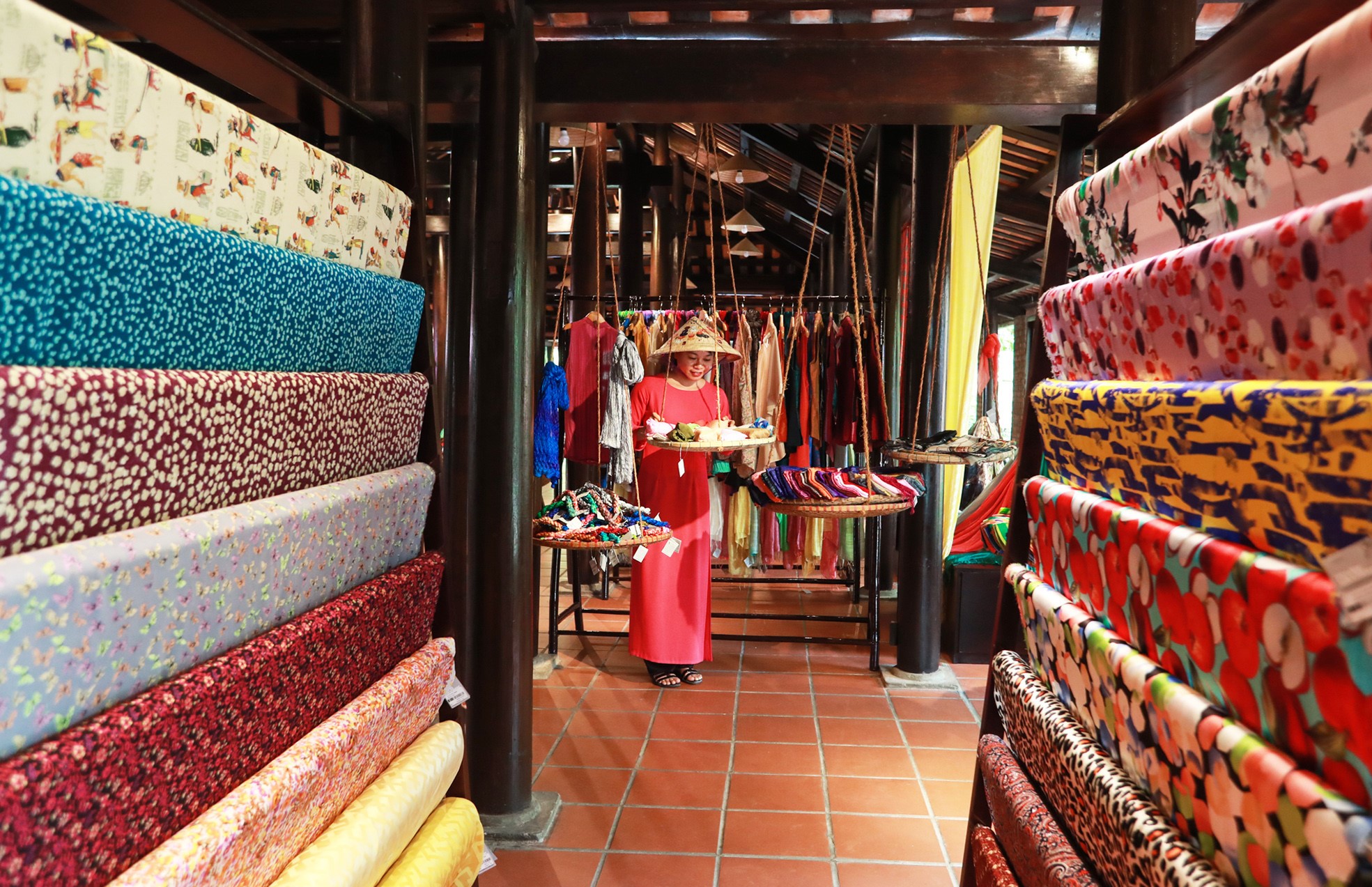
In particular, this place also displays traditional costumes of 54 ethnic groups in Vietnam. It reflects the cultural diversity of the S-shaped land, which will definitely leave an unforgettable impression and provide valuable knowledge for you.
Learn about Cham culture and the silk weaving process of the Cham people
To get the shiny, vibrant, and perfect silk fabrics that visitors are admiring, what processes and stages are needed? The question will be answered when you come to the silk village, directly witnessing the process of raising silkworms, raising silk, and weaving fabrics of the ancient Cham people.

Cham culture has existed for a long time, in which the silk weaving process of the Cham people is a meticulous and sophisticated craft that has been passed down through generations. One of the details that creates the uniqueness of Cham fabrics is the ancient pattern woven extremely carefully.
Each weaver must be very careful, counting each silk thread, weaving them together… creating eye-catching, standard patterns on the fabric.
Visit the ancient mulberry garden
In the mulberry garden area of Hoi An silk village, there is an original ancient mulberry tree that has never been hybridized. The tree has a wide canopy, more than 10 meters high, and has been planted since ancient Champa time and was brought to the silk village in 2012.

Here, you will admire the ancient mulberry tree, learn about the type of leaves, and the technique of caring for the tree to harvest many leaves… accordingly, there are about 8 batches of leaves to supply 8 batches of silkworms in a year.
Visit the silk weaving house
The silk weaving house is where silk raising, silk weaving takes place in the silk village. After the silkworms spin their cocoons, the cocoons will be harvested and continuously boiled in boiling water to produce soft, flexible silk fibers. To get large silk fibers made up of many small silk threads, the craftsmen must be extremely skillful, patient, meticulous, and experienced.
Visit Cuu Dien Museum
Cuu Dien Museum is a historical relic where various artifacts related to traditional crafts are displayed and collected from all over the place for visitors to see. In the exhibition area, visitors will be shown how to distinguish between silk woven from traditional wooden frames and silk woven from modern frames.
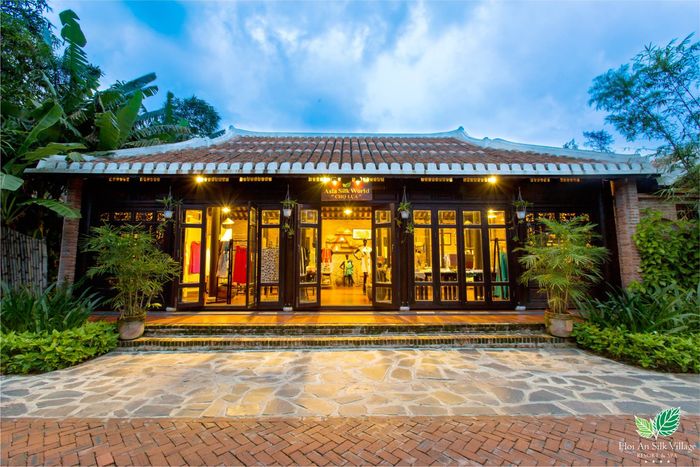
They will also learn about the different types of silk, such as slow-cooked silk, real silk, fake silk, and mixed silk. These are extremely useful tips for those who are passionate about silk.
Experience weaving like a real farmer
One of the most exciting experiences that visitors look forward to when visiting Hoi An Silk Village is to directly experience the activities of farmers and craftsmen of the silk village.
Visitors can pick mulberry leaves for the silkworms to eat, cook the cocoons, and weave silk under the guidance of skilled artisans.
Buy silk as a souvenir
Visiting the silk village without buying authentic silk products such as scarves, silk fabrics, silk ao dai, or silk clothing would be a waste.
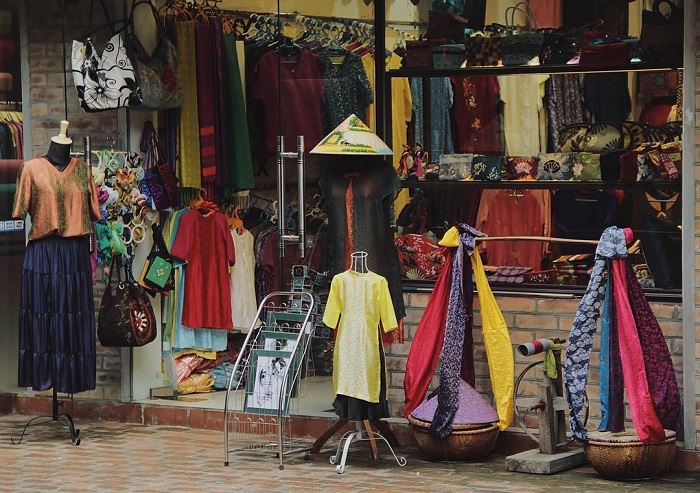
There are many styles, colors, and different price ranges of silk products for visitors to choose from to buy as gifts for friends or keep as souvenirs.
See More: Hoi An To Da nang Airport By Private Car
What local specialties can be enjoyed when visiting the silk village of Hoi An?
The local cuisine always makes both local and foreign tourists curious and excited to try. Vietnamese cuisine is incredibly diverse, with each region having its own unique dishes that leave a lasting impression on visitors.
When you visit the silk village of Hoi An, you will have the chance to enjoy the following specialties:
Hoi An-style sizzling pancake
Within the village, there are restaurants serving famous Quang-style dishes. Among them, the Hoi An-style sizzling pancake is a must-try. The crispy and fatty pancake is filled with shrimp, pork, bean sprouts and green onion, and served with a savory dipping sauce.
Tra Que shrimp noodle soup
The Tra Que shrimp noodle soup is a rustic dish that is well-known among the locals of Hoi An. The dish features a rich broth with various toppings, such as pork bones, chicken feet, fish and crab cakes, and noodles made from cassava flour.

Phu Chiem Quang-style noodle
This famous Quang-style noodle has been around for centuries and is known for its rustic and traditional taste. The dish is characterized by its brown broth, which is made from shrimp and river crabs. The broth is served with flat rice noodles and topped with pork belly and quail eggs.

Hoi An-style chicken rice
There are many small and large restaurants in Hoi An that serve Hoi An-style chicken rice. The dish consists of chicken that is boiled in chicken broth and served with rice that has also been cooked in the same broth. The dish is garnished with fresh herbs and is typically served with chili sauce or spicy fish sauce.
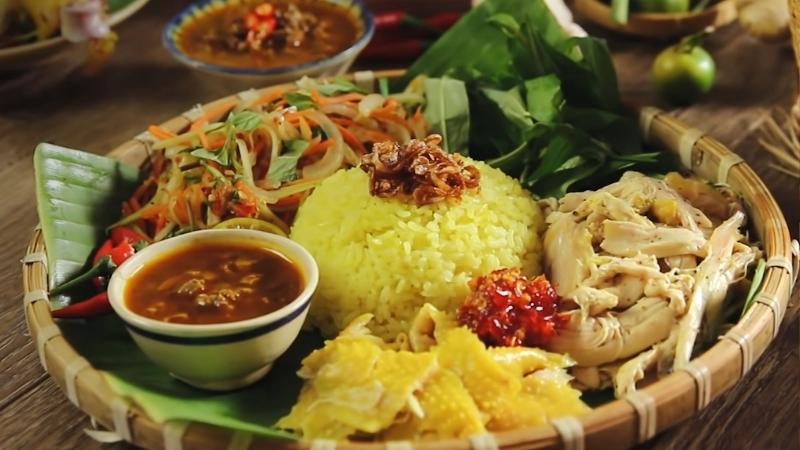
Silk village mulberry juice
As the traditional craft village that specializes in silk, the silk village of Hoi An offers visitors a refreshing drink made from mulberries and silkworms. This sweet and fragrant drink is perfect for cooling down after a hot day exploring the village. The drink is also believed to have skin-beautifying and blood-nourishing benefits.
See More: Top 10 Hoi An seafood restaurants that are very fresh, delicious, and super affordable.
Tips for exploring the silk village of Hoi An:
The colorful and vibrant space of the village will leave a lasting impression on visitors. Here are some tips for exploring the village:
- Enjoy a leisurely walk around the village to see the traditional architecture and the locals’ daily activities.
- Visit the silk workshops to see how silk is produced and buy some silk products as souvenirs.
- Enjoy a bike ride around the countryside to see the local scenery and get a taste of rural life in Vietnam.
Here are all the experiences of exploring the Hoi An silk village from A to Z. After reading this article, you can schedule a trip to Hoi An, explore the silk village on your own. What are you waiting for? Let’s hit the road!
